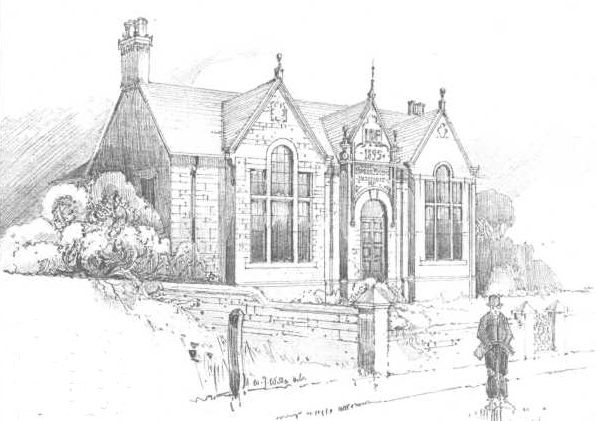In 1891 Dr William Whitworth wrote to Mr Passmore Edwards seeking his help to provide a Miners’ and Mechanics’ Institute. Mr Edwards replied that he had wanted to do something for the parish of his birth for a long time and would be more than pleased to supply a building.

“This building, which has been erected by Mr.J Passmore Edwards in memory of his brother, William P. Edwards, who died in London, and presented to the inhabitants of St. Agnes, his native parish, is situated on the side of the main thoroughfare leading to the town, and is built on land purchased, also by Mr. Edwards, of Mr. J. G. Engs, which has a very commanding position”.
“The building comprises billiard-room, 24ft. by 18ft.; reading-room, 24ft. by 18ft; committee-room, l6ft. by l4ft., together with hall-lobby, lavatory, cloak-room, store-room, etc and, being in an elevated position, is approached by a flight of granite steps. The dressings in front are of granite closely chiselled, with fillings of good local quarry stone of a dark brown colour with natural faces, nicely squared, and built in random courses. All other walls are built in random nobbling. The coping to gables, finials, and stringcourses are of granite finely cut, also archway in front entrance, over which there is a massive granite pediment, with suitable mono-ram and date cut thereon in raised letters. The roofs on the inside are open-timbered, and are stained and varnished. On entering the building there is a suitable glass screen dividing the lobby from the hall, with marginal leadlight work introduced, having a very nice effect. All the interior woodwork is of red and pitch pine varnished. The hall and lobby floors are laid in tile. The whole of the rooms are well lighted and ventilated, and the windows have marginal transom lights filled in with rolled cathedral glass in approved tints. The grounds are inclosed with a strongly-built wall, with heavy rockwork granite coping; the main posts of rock face a granite, with a massive cast-iron gate to entrance, the whole forming a complete finish to the building”. Extract from Building News, 13 April 1894.